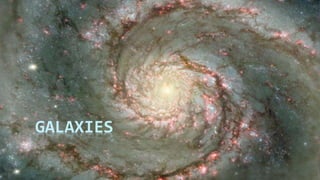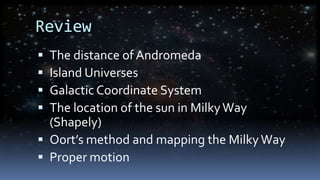The document provides an extensive review of galaxies, including their formation, classification, and key concepts such as dark matter's influence on galactic dynamics. Key findings include the evolution of spiral galaxies over time, the significance of supermassive black holes at galactic centers, and the relationship between luminosity and velocity dispersion in elliptical galaxies. Additionally, it discusses the search for and implications of dark matter, highlighting the challenges of identifying its constituents.













































